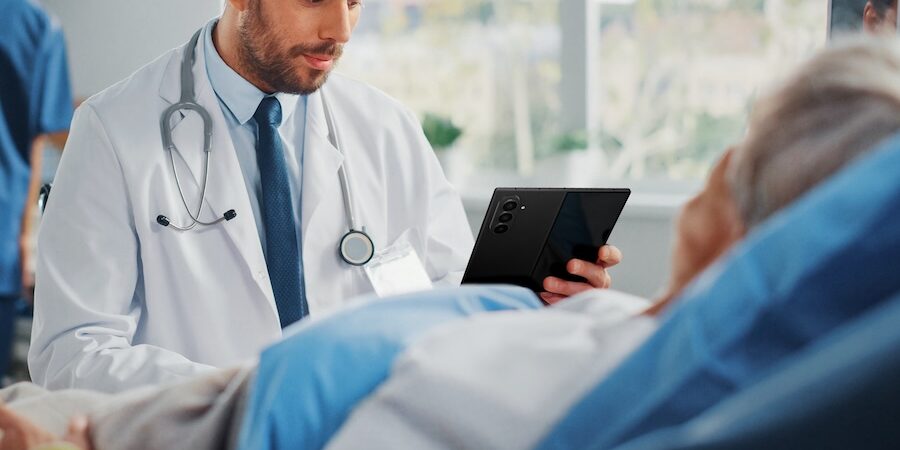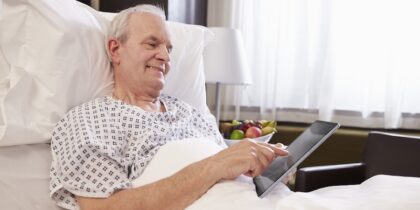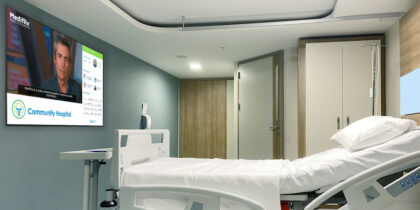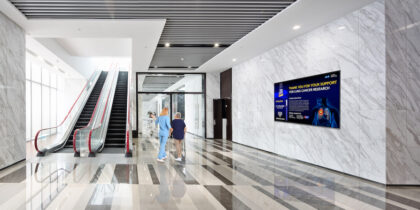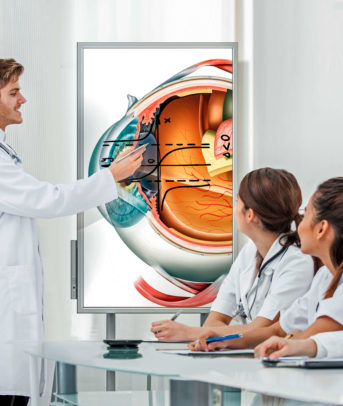If you were admitted to the hospital even just a few years ago, each bedside visit from nurses, doctors, and techs involved handing back and forth paper orders, instructions, or stats about your progress. Updates to your chart or orders were often entered at a stationary computer or on a desktop wheeled from room to room. Today, however, many leading hospitals have brought more mobile tech to the bedside.
At these smart facilities, when a doctor, nurse, or tech checks on you, they pull out a smartphone and scan a code on your wristband. Your entire chart populates on the screen, and the caregiver updates your status, views test results, or inputs requests. The device is also used for communication around discharge planning, patient transportation, or patient codes. Caregivers may elevate the experience even further with the newest class of foldable smartphones, a step beyond filling communication gaps.
When a doctor, nurse or tech scans the code on your wristband using a foldable device such as the Galaxy Z Fold, in lieu of a regular smartphone, they’ll view your complete chart on a spacious, tablet-like display. It’s easier to review lab results, pull up imaging scans, or check medication orders—all without squinting or excessive scrolling.
When folded, the device slips easily into a pocket—which a tablet can’t do. Foldable devices are also full-featured phones, allowing a caregiver to step into the hallway and immediately call a specialist, clarify an order, or coordinate next steps, without juggling multiple devices.
Better communication, better outcomes
Relying on desktop computers and disconnected systems slows down critical decision-making and takes valuable time away from direct patient care. Research from the Annals of Internal Medicine found that physicians spent nearly 50% of their day on administrative work, leaving less than half for face-to-face interaction with patients.
Faster, more connected tools like the Galaxy Z Fold help overcome these challenges. With instant mobile access to interoperable systems, every staffer can retrieve comprehensive patient records, receive real-time updates, and communicate seamlessly with colleagues—all from a single, pocketable device.
Designed for the realities of hospital care
Mobile technology directly impacts patient communication, too. Unfolding the screen makes it easy to confirm details, compare charts, and show patients their imaging results, or review recovery progress. This transparency can improve patient understanding and trust, while the speed of mobile communication reduces wait times for tests and procedures, shortens hospital stays, and lowers the risk of adverse events.
Integrating flexible mobile devices into healthcare transformed to match the correct hardware to the environment might have been about connectivity, initially. By putting real-time patient data directly into the hands of clinicians through secure, foldable mobile devices, hospitals can reduce delays, boost communication, and improve outcomes. Providers can work more efficiently, collaborate seamlessly, and deliver the kind of personalized care that drives better results, both clinical and financial, across the entire health system.
With Samsung’s healthcare solutions, you can elevate the patient experience, cut costs and streamline clinical communications. Discover how expanding care beyond the hospital’s four walls leads to better patient outcomes with our latest whitepaper.
